
Our reporter gets unique insight into how the current Living Stations program evolved from scrawled notes to a top-notch production
Malvern’s unique annual performance of Living Stations had its roots with Dr. Fry and Mr. Liga, while they worked together at Bonner.
“It was Dr. Fry’s concept,” Mr. Liga said, trying to recall the genesis of the duo’s creation. “He had seen things like it before, and knew that he wanted Bonner to do it.”
How did Liga and Fry develop the idea? “It was actually during an inservice day, where we were supposed to listening to administrators about probably important stuff. We just started to brainstorm. At the time, I didn’t really know specifically about The Stations themselves, and he had full knowledge full knowledge of them. So we were writing back and forth on notepads so it looked like we were taking notes and paying attention…”
“Yeah, I know, well it’s not like we are going to get in trouble now,” he laughed.
“The Stations got started at Bonner,” said Dr. Fry in an email. “I had the idea about 15 years ago and approached Mr. Liga, whom I was working with at that time. After throwing the idea by him he agreed. The writing process? Well, the script was easy to “write” as it is the lyrics of the songs.”
According to Liga, during the in-service, Fry wrote out the names of the Stations and described what these would look like as tableaus. “Then we just started going back and forth on the subject of ‘Song Ideas’; what songs would fit with what Station. It took a while. Probably about an hour and a half to two hours, but we were in this meeting, so…”
“Mr. Liga and I approached some Bonner guys and asked for songs that they thought would make a good connection to each of the Stations. Although some of the songs have changed, many of the original songs are still being sung today,” said Fry.
“At that [first] meeting, we decided that John 19:41 would be where Jesus fell for the first, second, and third time, and Gethsemane would be for when Jesus was nailed to the cross,” said Liga. “And, you know, a lot of the original songs were on the same instance…the original, um…here.”
Mr. Liga got up out of his chair and opened up an overhead cabinet, revealing a plethora of blue, choral folders stored inside. He took out a particular blue folder, bigger than the rest. A faded piece of tape clenched the binding of the folder. Mr. Liga opened the binder, showing a stash of nearly twenty papers, each one of some relevance to previous Stations. He pulled out a particular piece of paper, unveiling the genesis of the duo’s creation.
“This was the original plan [in my handwriting]. So this was going to be a part of a spring concert. It was originally planned that there was going to be an intermission, and I think that was how we did do it,” said Liga. “We didn’t really have a music program, per se, that was really strong at the time. We were going to do that for, say, forty-five minutes, and after the intermission we were going to do the ensemble performances.”
The original concept included King of Pain by The Police [which we actually did here at Malvern for a couple of years]. It also included “Don’t Cry” by Seal.
Seal? “Yeah. You know, the guy that was married to Heidi Klum?” said Liga. “Yeah, well, I think was the only year we did that song.”
Listen to a recording of the original 2000 performance at Bonner:
“So we kind of started from the end and worked backwards, changing things along the way. And we kept some of the same songs, but just switched the Station,” said Liga. For instance, in an earlier version, the third station – Jesus Meets His Mother – featured Tears in Heaven, which came later in this year’s version.
“We also did some other things differently. For example, we [once] did Boulevard of Broken Dreams by Green Day for when Jesus meets Pontius Pilate. So, we do change it up every now and then.”
According to Liga, the song Mary was a Malvern student’s idea. “His name was Dan Hegarty, and he was a senior at the time. He came up with the idea, and brought in the CD (Scissor Sisters, Scissor Sisters, 2004), and I was like, ‘Wow, this song fits perfectly. That was one of the really happy accidents, where the student came in with a better idea.” [toggle title=”What are your favorite songs in Living Stations?” state=”close”]
Michael Pund: “My favorite song from Stations was Here Comes The Flood. It’s an awesome song that always takes me right back to that day when I hear it.”
John Oakley: “Favorite song has to be In Your Eyes which played during Simon’s interaction with Jesus. I’ve always secretly loved that song, and it was pretty sweet having it play as I was on stage.”
Caitlin McCallister: “I loved In Your Eyes by Peter Gabriel.
James Klinges: “Definitely Renegade by Styx.”
Buddy Glatz: “Renegade by Styx, no doubt.”
Sean Ferguson: “My most memorable song from the stations of the cross was Renegade by Styx. I had never heard it before and after seeing Jesus go through what he did, that song made perfect sense.”
Alex Igidbashian: “Though I loved the epic nature of both Carmina Burana and Gethsemane, I’d have to say that my favorite was Renegade by Styx. Ed Liga, the band, and the choir killed it.”
PJ Finley: “My favorite song is the choir’s version of what I believe is called Renegade by Styx.. the one that starts out ‘Oh mama I’m in fear for my life…’ Whenever I hear that song today it brings me right back to the Duffy Center. The Malvern choir does it better than Styx does.”
Kaitlin Kelleher: “My favorite song from Stations was Gethsemane – it’s a heartbreaking song but it really illustrates the agony Jesus went through not for His own benefit, but for ours. Joe Canuso and Malvern’s Liturgical Music did a phenomenal job.”
Shannon Maguire: “My favorite song was ‘Gethsemane’ because I think that it portrays the way that Jesus was probably feeling in that moment really well.”
Mr. Liga: “Didn’t we talk about this in class sometime? [I think so.] Which one did I say? Mary, I think.”
Dr. Fry: “My favorite song is Philadelphia, which is sung at the end of the Stations.”
Mr. Legner: “It’s… oh, we sing it in the mass…I’m completely blanking on it. OH, Lamb of God!
M.P. Salinas: “I forget the names of the songs – but I like the one where Jesus is like ‘Take this cup, awaaayy from meeeee. For, I don’t want to, drink it’s poison!’ Ha – that one is good”
[/toggle]
Mr. Larry Legner is the current director of Living Stations. “When I started out with Stations at Malvern, I was assisting Dr. Fry,” said Mr. Larry Legner. “And I was the ‘theological person’, making sure that everything happened the way it happened. Then, when he started getting big responsibilities and taking over directing the shows, he asked me to take over, and I said yes.”
Legner is proud of this year’s feature of the Resurrection. “The whole ‘Death’ and ‘Suffering’ are seen every year, but this year was the first year that we portrayed the ‘Resurrection’. That was something that I was wanting to do for a couple of years, but is expensive to do. The money was available to do it, so we did it,” said Legner.
How does Legner select the Living Stations cast? The girls are recommended by Dr. Fry from their involvement with Malvern Theatre Society productions, and some contact Mr. Legner directly, volunteering to be involved. “With the boys, I usually tend to try to pick guys who have not done any theatrical event at all,” said Legner.
“There’s also a size I look for. For example, Jesus has to be able to fit on that cross, and it’s not a very big cross, so he has to be a smaller person. With Pontius Pilate, I’m looking for someone who is big and can be mean looking. Sometimes it can end up being one of the nicest kids in the class, like this year we had Chris Cary. He’s not necessarily tall, but he needs to be wide and intimidating in order to condemn Jesus to death,” said Legner. He notes that the guards must be strong, because they need to be able to lift Jesus.
“I’m also really looking for guys who haven’t already been a ‘big name on campus,” said Legner. That’s important, because he has many seniors asking if they can be in Stations, and wants to feature students who may not have been recognized in the past.
“I also want people who are going to reflect the spirituality of the whole thing,” said Legner. “You know, I don’t want someone who’s been a jerk for the past four years being Jesus. People would look at him and laugh and say ‘That’s not Jesus”. I try to get people who have been good to Malvern, and it’s really an honor to be one of those characters. [toggle title=”What did performing in Living Stations mean to you?” state=”close”]
“Playing the role of Jesus was a venture in combining the reverence of something sacred with the nuances of an art piece. In working with Jim Fry, we very much wanted to approach the piece with new eyes and a fresh perspective, but all while never forgetting the respect and sanctity tied to The Stations of the Cross. It was a fantastic lesson in using certain unchangeable aspects and connotations as building blocks to create something no one had seen before.” – Alex Igidbashian, ‘08
“The performance had a large impact on my life. As political science student I have come to understand the motivations behind Pontius Pilate’s decision. As a leader of the people he is bound to the comply by the consensus voice of the people. In an effort to appease the people he had Jesus pretty brutally whipped. It did not have the effect on the people that he thought it would. It was at that point that he no longer wanted to deal with Jesus and washed his hands of him. It taught me to not not be so critical of our leaders. They can only do so much by themselves, but are just an extension of the people and what the people want.” – Sean Ferguson ‘08
“My experience playing Mary was truly phenomenal. It was incredible getting to portray such an important role in a pivotal moment in our faith. I was also surrounded by a bunch of my close friends who were in the cast too, which made it even more special. Another thing that made it really special to me was that my little sister played one of the children, and since that was the only time both my sister and I will be able to perform on Duffy’s stage it was especially sentimental.” – Chelsey Dawson, VMA ‘13
“It was really enlightening for me to experience the Stations through Mary’s perspective. Because we usually just imagine how Jesus was feeling. Playing Mary gave me a better appreciation for her and all those close to Jesus because now I understand how strong his friends and family had to have been to watch Him suffer.” – Kaitlin Kelleher, VMA ‘14
“I had never been to the performance before. So my first experience with it in general was when I performed the role as Veronica. It was extremely moving, more so than being in a usual Theater performance. It was filled with emotion and I remember just being captured by it in general. You don’t really think about the passion and yeah you read about it, but seeing it performed real life in front of you, it was really intense.” – Emily Oulton, VMA ‘12
“I do honestly believe that my performance contributed to the person that I have become today. I learned that some of the best memories in life come from stepping outside of your comfort zone. A few years prior to my performance I would have laughed at the idea of playing Jesus in the Stations of The Cross, but now I couldn’t imagine it being any different and wouldn’t change that experience for anything.” – Michael Pund, ‘12
“My favorite part was on our performance day seeing people cry from watching us act out Jesus’s death. After doing the Stations, I’ve definitely been reminded to go to church every week, and know why I’m going to church in the first place.” – James Klinges ‘13
“The biggest impact the performance had on me was learning in a more immediate way what it means to follow Jesus. Watching the Stations certainly helps us understand, but actually participating gives you a hands on experience. Although the cross I picked up was just plywood, I was helping Mike Pund and not Jesus, it reminded me that it is in everyday actions that we can follow Jesus and help others.” – John Oakley ‘12
“My performance impacts me today in that I am much more willing to try something radically new to me than I was before playing Pilate. My Mom has been trying to get me to act for years, maybe one day I’ll take her up on it.” – PJ Finley ‘12
I had a good experience being in stations last year. I played a soldier who crucified Jesus. It was an honor to be a part of a production that remembered what Jesus did for us and what is the cornerstone of our faith. It was a cool experience to perform in front of the school. – M.P. Salinas ‘13
“My experience as playing Jesus was pretty great, I would have to say. I’ve never done any acting before so that was new for me, but I had fun with it. It was definitely a challenge not to crack a smile in front of all my classmates, but I was able to get in the zone and block it out. The performance definitely impacted me. I was so focused on being Jesus that I grew closer to him during the time. Overall I had a great time and it was an honor to be Jesus.” – Mark D’Agostino ‘14
[/toggle]
Practices are challenging with students’ busy schedules. “Because most of the boys are involved in a sport, we practice until three-thirty on Tuesdays, Wednesdays, and Thursdays,” said Legner. “We only really practice maybe twelve or thirteen times, and then we have of that last week, we have a full rehearsal of everything.”
“We start the week after Ash Wednesday, so it is a Lenten event,” said Legner.
“You’ve got to remember, when I got here in 2000, there was no Men’s Chorus or Liturgical Music. There was just that concert choir, as you see up there.” Mr. Liga points to a picture on a shelf, with a few men donning the usual performance white shirt and black pants. “It took a while to get the whole thing up and running. Once we started doing the Stations, I had about fifty guys in the homeroom the next year.”
Liga sums up the development of Living Stations, “It definitely took some time to build, but now we have it and people seem to like it.”




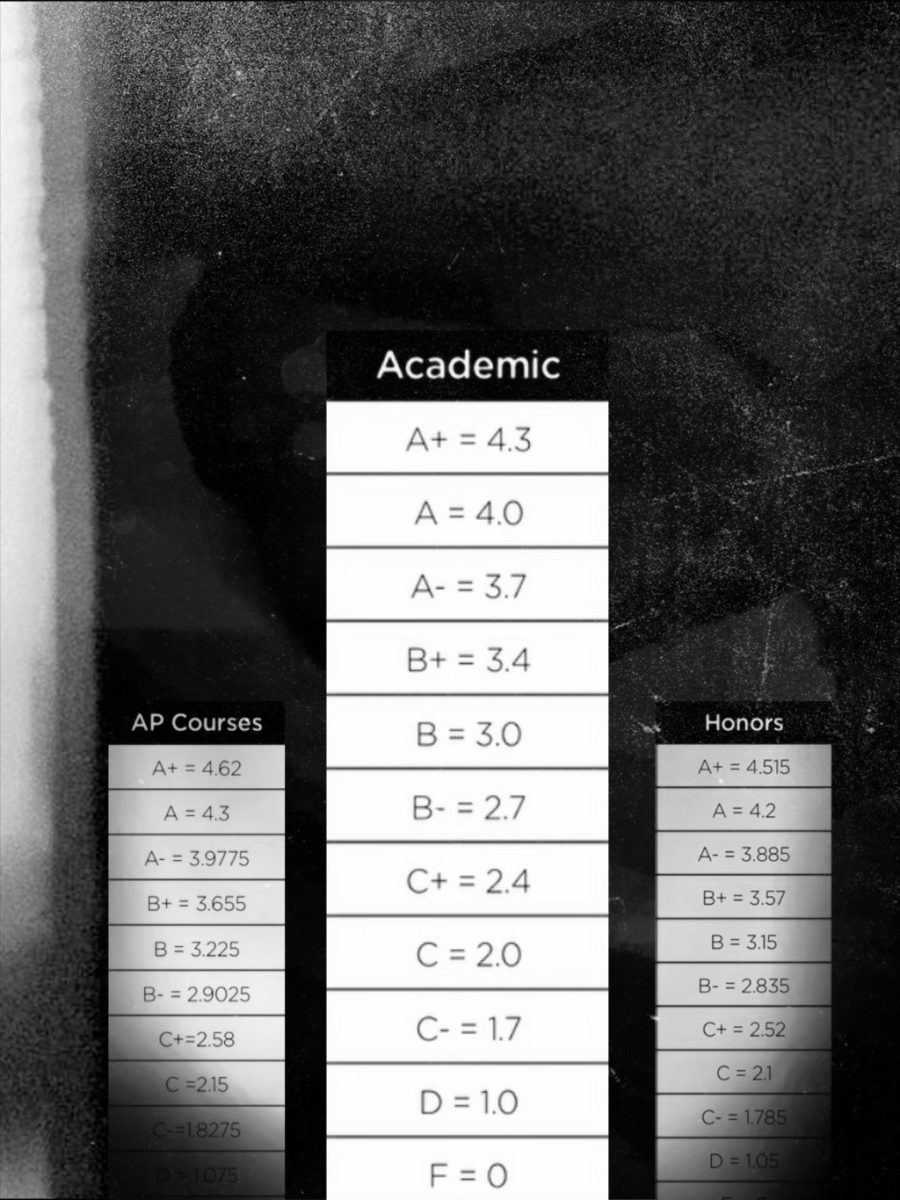
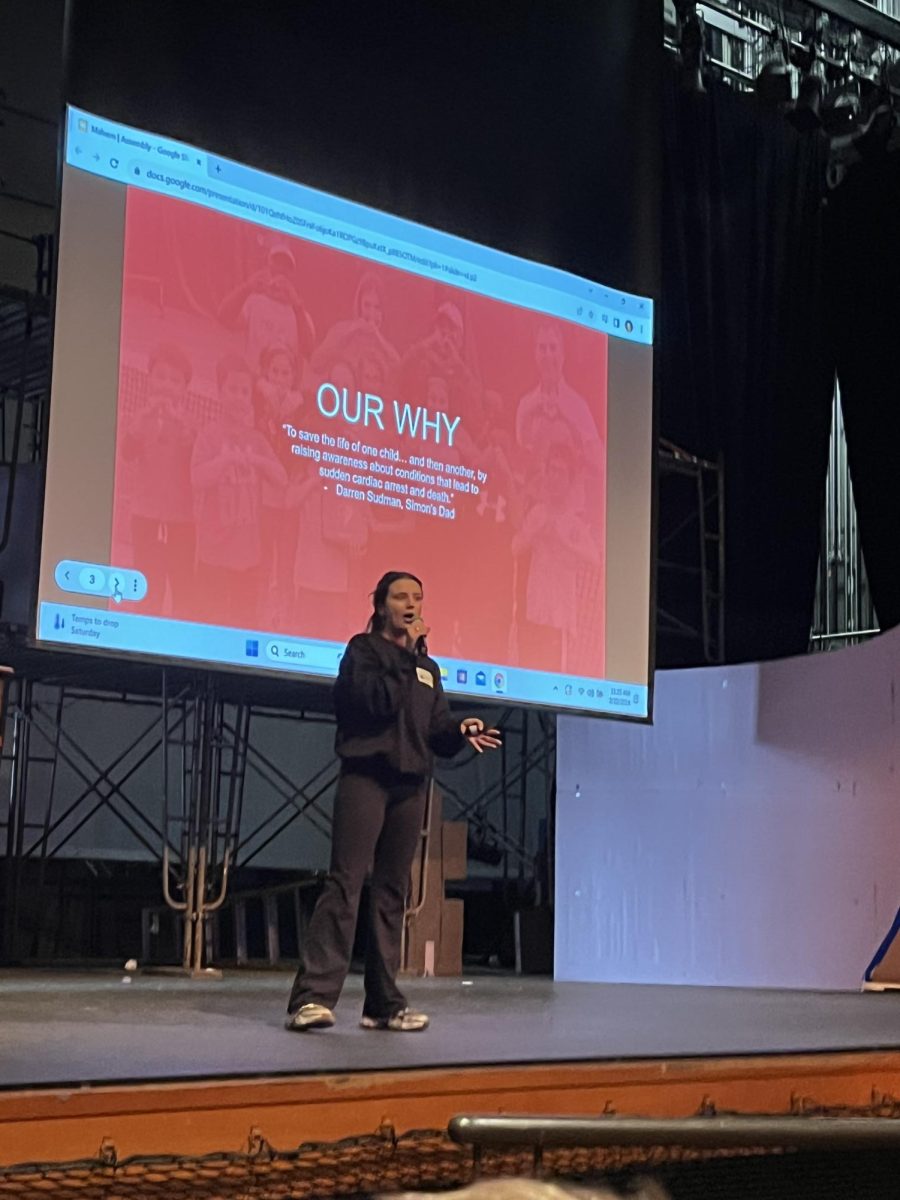
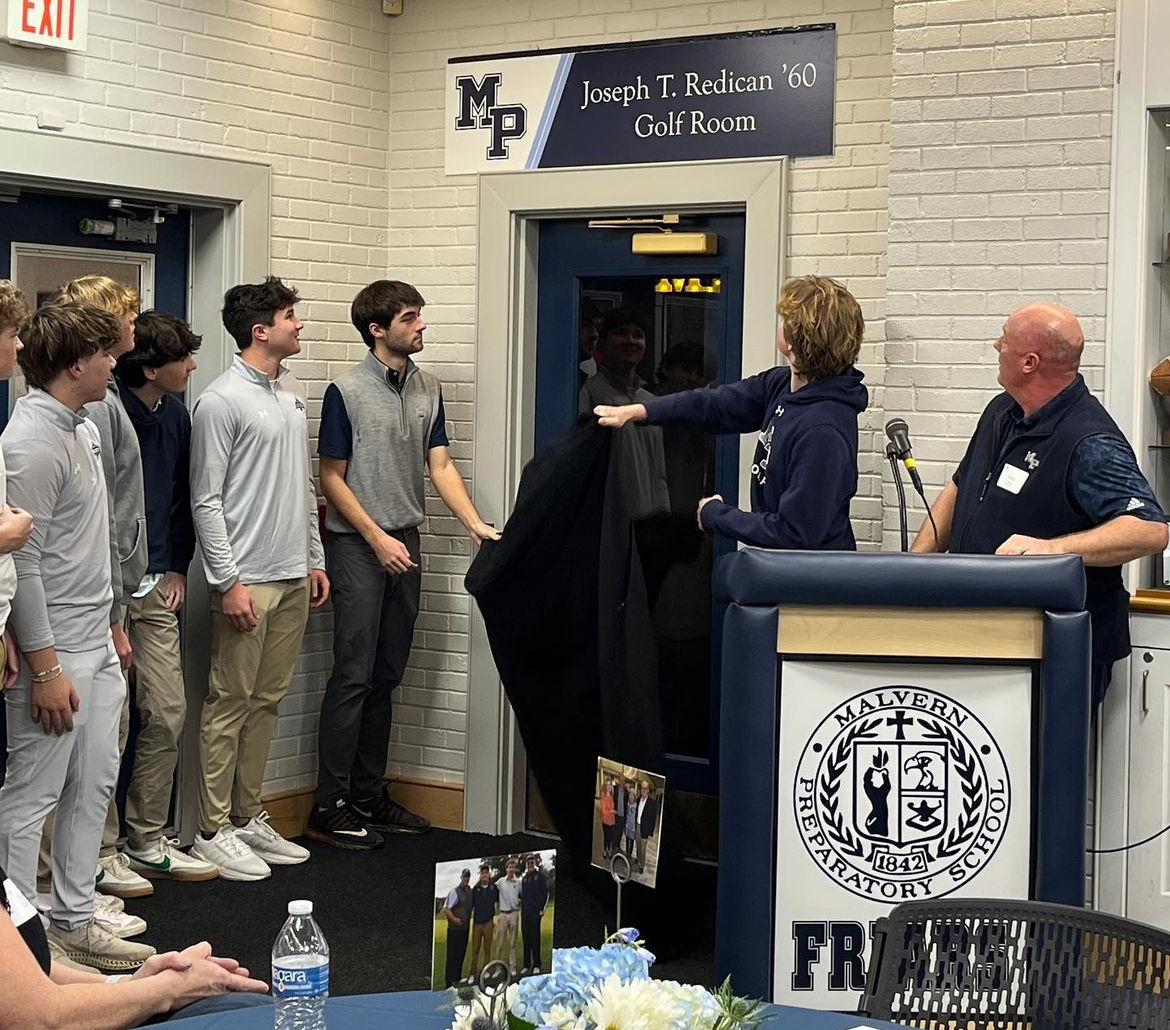

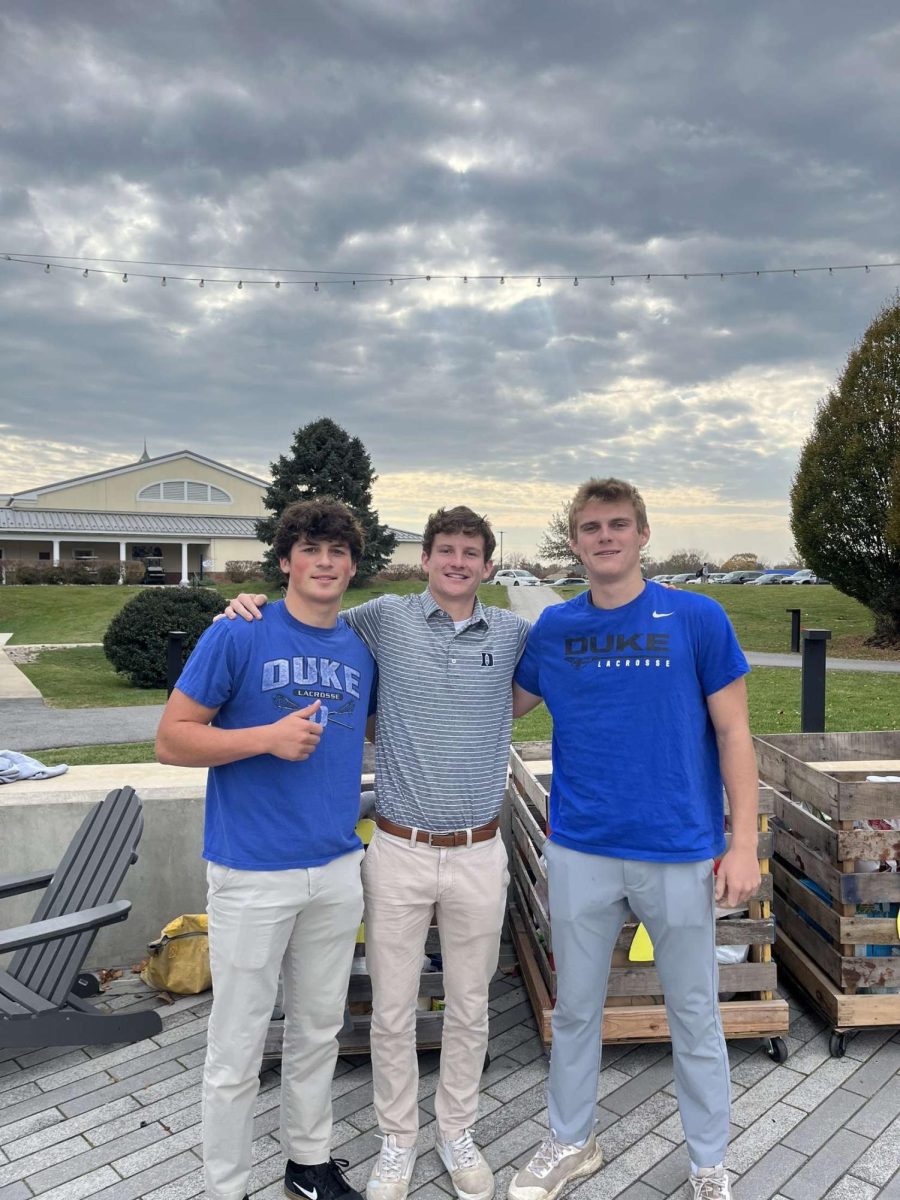
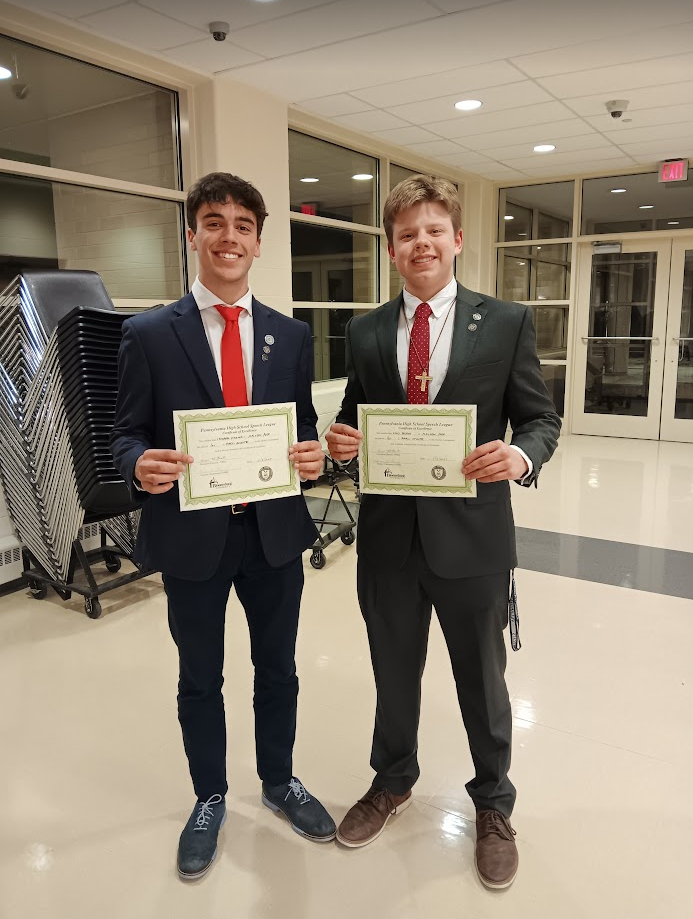

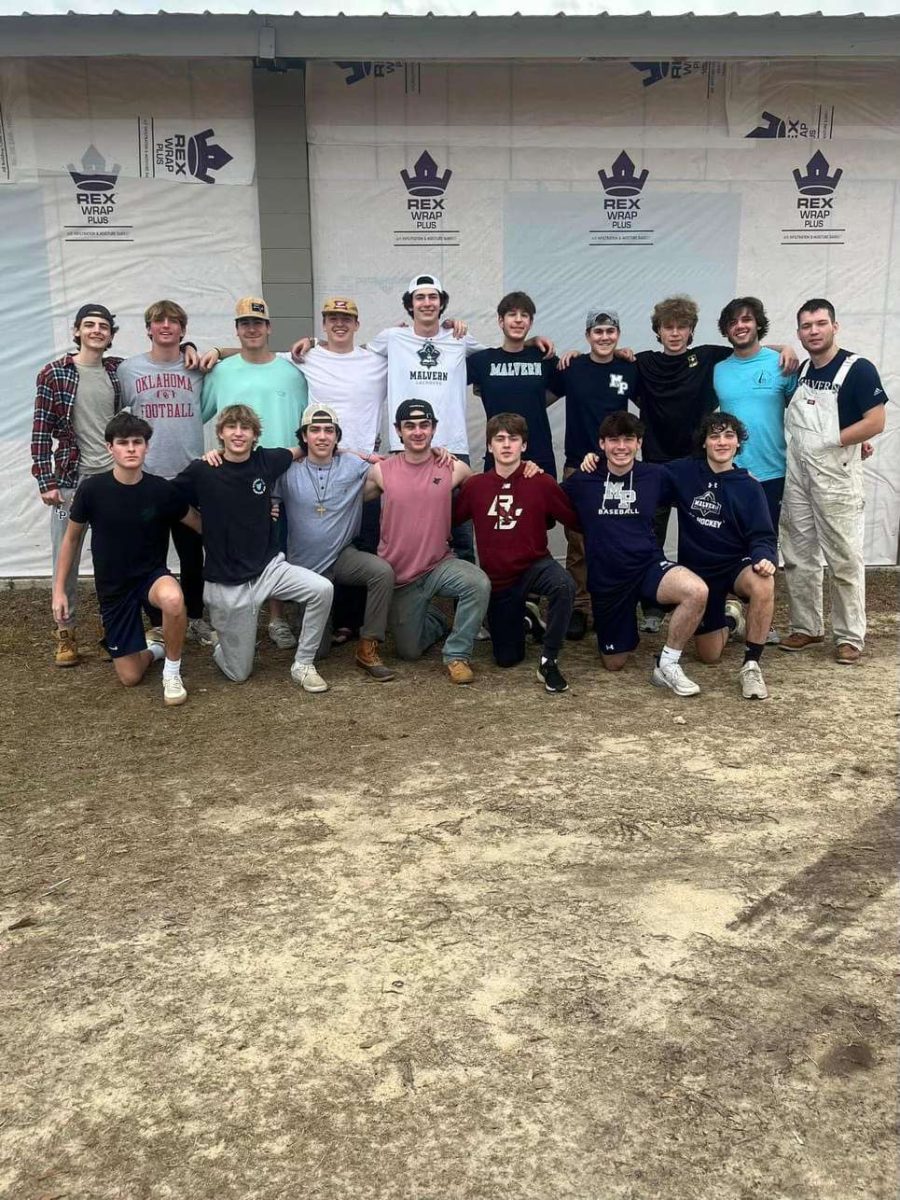


Andrew Stetser • May 2, 2014 at 11:38 am
Thanks Jack! It’s an awesome event, and I’m glad to be a part of it as well!
Jon Heisler • May 2, 2014 at 1:03 am
Would love to here a recording of this year’s Stations to see how far the event has come since 2000
Andrew Stetser • May 2, 2014 at 11:35 am
Hey Jon!
I’ll check around and see if I can find anything!
Jack Marchesani • May 2, 2014 at 12:17 am
Andrew… This is insanely well written and so awesome… I’m even prouder to be in stations bc of this article,.. Great job!!